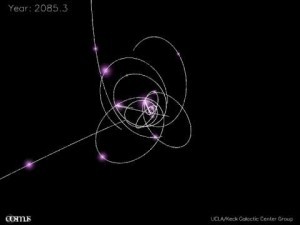The Earth has a spherical shape (technically an oblate spheriod) but it’s gravitational field is not as spherical. There are regions of the Earth where it’s surface gravity is stronger and others where it is weaker. If we map the gravitational field of the Earth, and represent gravitational strength by elevation, then we find a distorted shape shown above, sometimes called the Potsdam Gravity Potato.
The term arose because Podsdam, Germany is where the gravitational data was analyzed, and it looks kind of like a potato. What’s interesting about the map is that it doesn’t have the shape you would expect. Intuitively you might think that a region like the Alps with its high mountains would have a strong surface gravity, while ocean regions would have a weaker gravity. After all, if you have more stuff under you, there should be more gravity. But what we find is that there are ocean regions with strong gravity, and mountain regions with weaker gravity. The distribution of mass in Earth’s interior must be causing much of this variation.
Just how Earth’s interior causes these fluctuations is not yet fully understood. But maps such as this should provide some useful clues.













Comments
Now we know what parts of the Earth’s mantle to prospect for gold, or maybe lead.
Well, is it ‘Potsdam’ or ‘Podsdam’?